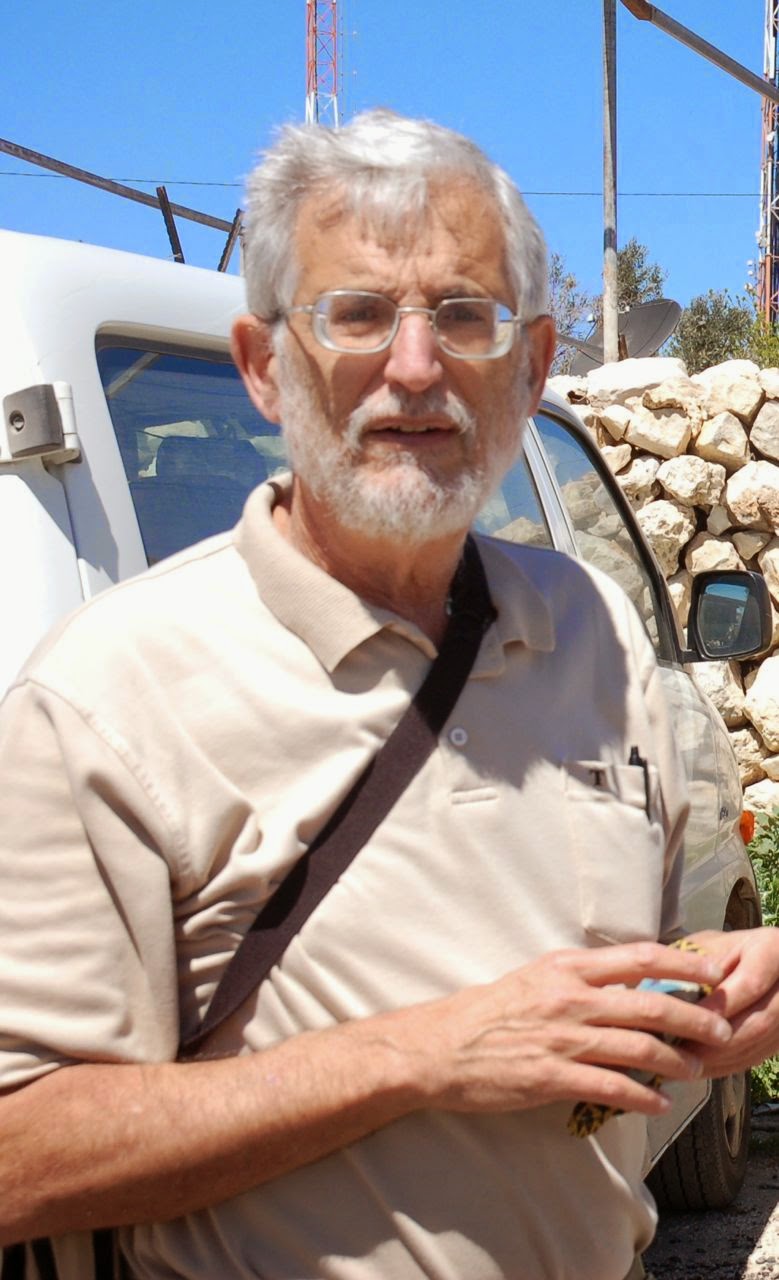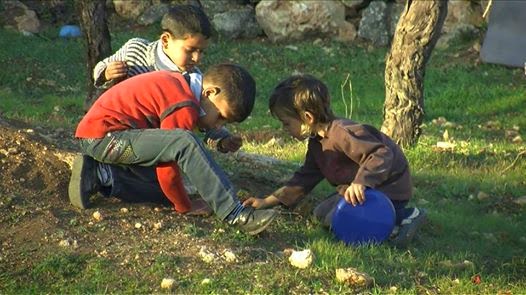 |
| Regional Administration Centre |
We had only gone a few yards when Myron stopped to pick up a Palestinian. He was going to the regional administration centre and so Myron drove him there, and told us about the process.
 |
| Waiting for permits |
 |
| Hirbeit Zakariyah |
We looked out over the land. Myron told us that some of the fields were Jewish and some Palestinian - he could not tell. We asked about the provision of water, as our experience is that you can tell - Jews get water and Palestinians don't. He told us he didn't know, but that was one of the issues he felt he should know more about.
 |
| Mohammad Saad |
Myron told us about the efforts of some of the people from the Settlement to get building permits for this village - in particular for the school here. The village is, of course, a startling comparison with the Settlement we were to visit, but Myron puts this down to long-term lack of investment in infrastructure by the administrations - Jordanian and Palestinian. Of course, this is now Area C land, which means that no building by Palestinians is allowed by Israel, even though this is in the West Bank.
This fascinating, yet unexpected, itinery continues when Myron tells us that he has had a call and needs to go to Nahalin. This is the Palestinian village nestling in the valley surrounded by Settlements on all the hills. We take the bumpy track to the village and encounter a road closure - due to the installation of a major water drainage pipe by the US. Myron negotiates with the Palestinian guarding the barrier and we are allowed to enter. The excavators give way and we squeeze through and on into Nahalin. We pick up Mahmoud, who turns out to be Myron's barber! He needs to get to the kibbutz at Kfar Etzion, so Myron finally takes us there.
We walk into the Settlement. There was no security on the gate. We notice the green grass (with built in watering system). All is calm and pleasant - the soldiers sit having a smoke under the tree.
Myron did not tell us, but I researched Kfar Etzion - I did not know the story. Kfar Etzion was a (Jewish) kibbutz established in 1943. It was at the heart of the tensions between the Jews and the Arabs and was attacked on the day before the State of Israel was declared on May 13th 1948. Most of the people in the kibbutz were killed by the Arab legion. Israel retaliated and killed all the Arabs in a neighbouring village. There is always a dispute about who started the war. The date of the "massacre" is remembered as Israel's Day of Remembrance. The orphans of the kibbutz pressed to return and were allowed (by Israel) to came back to resettle in 1967. This was the first Settlement in the West Bank. Myron came here in 1971 (from America I think). There are now around 150 families, about half of which are in the Kibbutz and half not.
While we are here, Myron tells us two more stories. A Palestinian who worked in the Kibbutz was injured in a fire and needed hospital treatment. They called for the Settlement ambulance to take him to Hadassah hospital in Jerusalem. However, the Palestinian would not be allowed through the checkpoint as he had no permit for the hospital! In the end they decided to take him in a military ambulance that is not checked. An act of kindness amidst discrimination.
Myron also told us about the play area nearby. This has been established for Jewish and Palestinian children to meet and play together with their families.
We heard about some violence by the Settlers. I read later of Settlers who had burned a Mosque. The Rabbi and several others from the Settlement went to apologise and to take gifts of copies of the Quaran.
Our time had come to an end and we took our leave. Myron told us that he had struggled to tell us his story, and we felt a similar confusion. Myron is a kind, peaceful, man and I enjoyed meeting him. I discovered that he attended several sessions at the Christ at the Checkpoint Conference, and that he participated in Sami's workshop. There was a simple explanation for his presence in Bethlehem.
As we travel back to Bethlehem, we pass this outpost. Temporary (white) buildings are replaced by new houses (with red roofs). Another sign of the inequality as Israel builds another new illegal settlement.
This visit gave rise to considerable discussion back home in Aida Camp. Can Settlers be kind and peaceful, while living in an illegal Settlement, while Israel discriminates by refusing Palestinians permission to build on their own land, by requiring permits to travel and work, by allocating four times as much water to Jews as Palestinians?
I believe that all are equal in God's sight. People here are not treated equally. The occupation is wrong and Israel will destroy its own soul if it continues. Good people like Myron live in physical comfort, yet moral discomfort with the injustice. Other Settlers just live in comfort and ignore the "arabs" as they call them. Should good people move out of Settlements as they are illegal, or should they live there and do what they can to make other Settlers uncomfortable and try to make life better for Palestinians. A complicated question!







I've finally had time to read your blog. Thanks for sharing this experience. I learned some new things from it. It also put a personality to a settler-- I usually just think of them as a group and not in a favorable way!
ReplyDelete